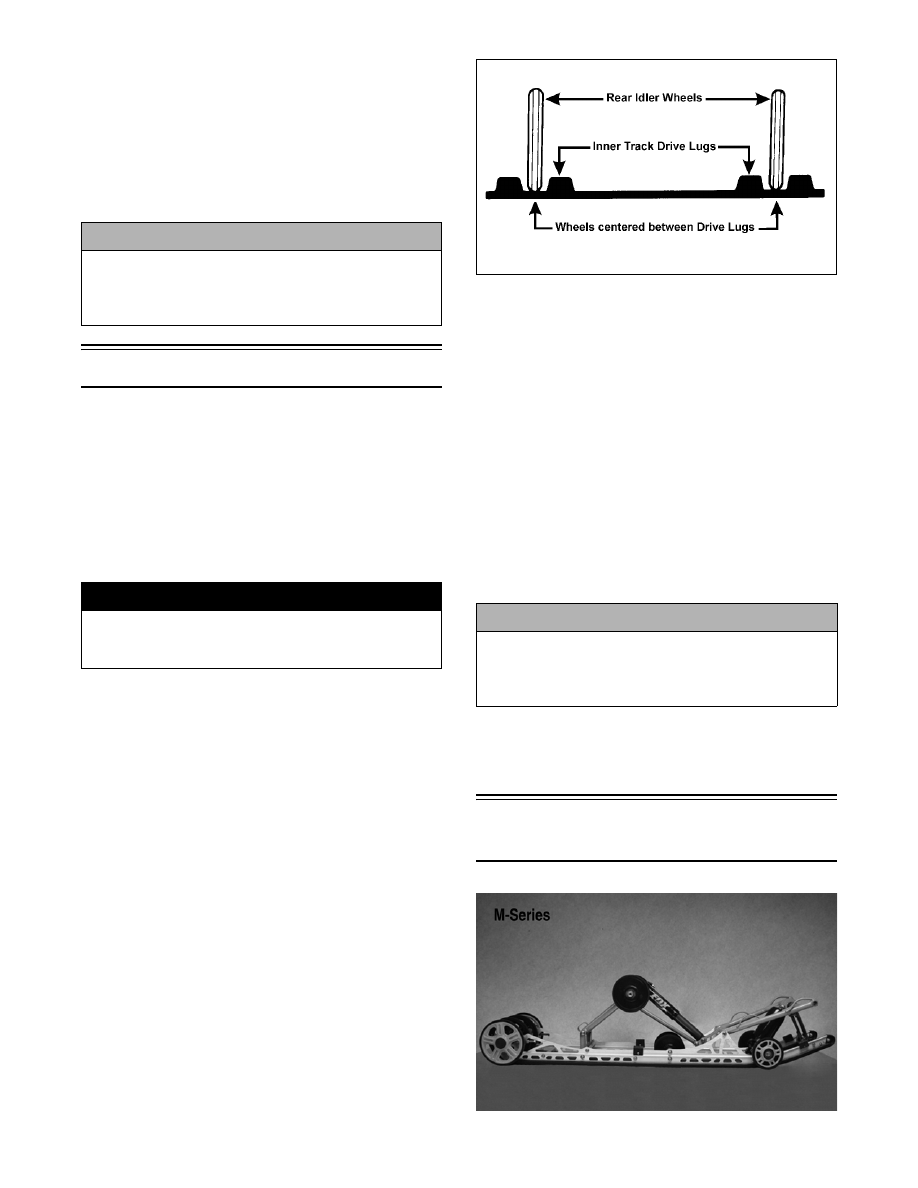Snowmobile Arctic Cat (2008 year). Manual - part 128

7-72
4. After correct track tension is obtained, check track
alignment (see Track Alignment in this sub-sec-
tion).
NOTE: Track tension and track alignment are
interrelated; always check both even if only one
adjustment seems necessary. Always establish
correct track tension before checking and/or
adjusting alignment.
Track Alignment
NOTE: Proper track alignment is when the rear
idler wheels are equidistant from the inner drive
lugs on the inside surface of the track.
CHECKING
1. Using a shielded safety stand, raise the rear of the
snowmobile off the floor making sure the track is
free to rotate.
2. Start the engine and accelerate slightly. Use only
enough throttle to rotate the track several revolu-
tions. SHUT THE ENGINE OFF.
NOTE: Allow the track to coast to a stop. Do not
apply the brake because it could produce inaccu-
rate alignment conditions.
3. When the track stops rotating, check the relation-
ship of the rear idler wheels and the inner track
drive lugs. If the distance from the idler wheels to
the inner drive lugs is the same on both sides, no
adjustment is necessary.
725-070A
4. On the side of the track which has the inner drive
lugs closer to the rear idler wheel, loosen the
adjusting bolt jam nut; then rotate the adjusting
bolt clockwise 1-1 1/2 turns.
NOTE: If the track tension must be loosened, it
may be necessary to loosen the rear axle assem-
bly slightly.
5. Continue to check the track alignment and make
the necessary adjustments until proper alignment
is obtained.
6. After proper track alignment is obtained, lock the
jam nut against the axle housing.
NOTE: Make sure correct track tension is main-
tained after adjusting track alignment.
NOTE: Field test the track under actual condi-
tions and, after the field test, check track align-
ment and track tension; adjust as necessary.
Repair Procedure 3 -
Track/Rear Suspension
CM221A
! CAUTION
After proper track tension and alignment have been
attained, make certain that the rear axle assembly is
tightened to specifications or component damage
will occur.
! WARNING
The tips of the skis must be positioned against a
wall or similar object for safety. Keep hands, feet,
and clothing away from moving components.
! CAUTION
After proper track tension and alignment have been
attained, make certain that the rear axle assembly is
tightened to specifications or component damage
will occur.